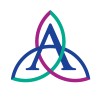Comparison of Breath-Enhanced and T-Piece Nebulizers in Children With Acute Asthma
Asthma

About this trial
This is an interventional treatment trial for Asthma
Eligibility Criteria
Inclusion Criteria:
- Age ≥ 6 years and < 18 years
- History of physician diagnosed asthma
- Presenting to ED with breathing difficulty or cough
- Initial FEV1 25%-70% predicted
- Parent or guardian speaks English or Spanish.
Exclusion Criteria:
- Pediatric Asthma Score of 0
- Pregnancy or breast-feeding
- Immediate resuscitation required
- Chronic lung disease (other than asthma)
- Congenital heart disease
- Neuromuscular disease
- Suspected intrathoracic foreign body
- Allergy or other contraindication to study medication
Sites / Locations
- Dell Children's Medical Center, Emergency Department
Arms of the Study
Arm 1
Arm 2
Active Comparator
Experimental
T-piece Nebulizer
Breath-Enhanced Nebulizer
Pre-treatment spirometry measurement will be performed, intervention with a one time 5mg nebulized albuterol treatment will be administered with the experimental "T-piece Nebulizer" (Hudson RCI® Micro Mist® nebulizer Teleflex Medical®, Research Triangle Park, NJ). Treatment will be administered over 10 minutes. Following this therapy, post-treatment spirometry measurement will be performed.
Pre-treatment spirometry measurement will be performed, intervention with a one time 5mg nebulized albuterol treatment will be administered with the experimental "Breath-Enhanced Nebulizer" (NebuTech® HDN®, Breath-Enhanced High Density Jet Nebulizer Salter Labs®, Arvin, CA). Treatment will be administered over 10 minutes. Following this therapy, post-treatment spirometry measurement will be performed.
Outcomes
Primary Outcome Measures
Secondary Outcome Measures
Full Information
1. Study Identification
2. Study Status
3. Sponsor/Collaborators
4. Oversight
5. Study Description
6. Conditions and Keywords
7. Study Design
8. Arms, Groups, and Interventions
10. Eligibility
12. IPD Sharing Statement
Learn more about this trial
